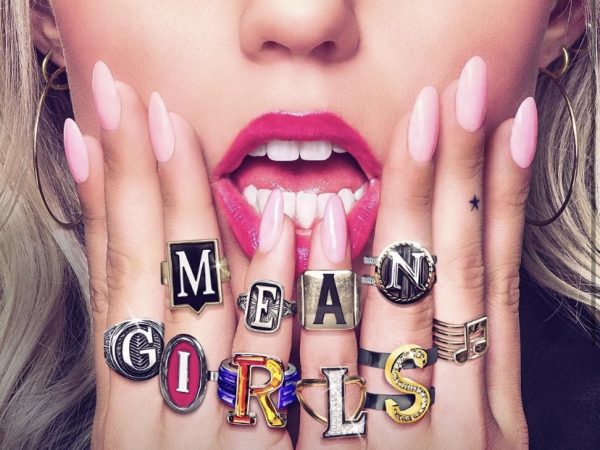Artists Blurring the Lines of Femininity and Masculinity
The Vogue December 2020 cover story features Harry Styles—the first solo man to be on the magazine’s cover—with a personal interview and photoshoot. The article dives into his time throughout quarantine, music and acting career, fashion inspiration and have a video of the photoshoot with an acoustic cover of his song “Cherry,” all with the aura of a summer haze. Throughout the story, the photos have Styles wearing stunning outfits from Gucci, Marni, Comme des Garçons and more. These outfits include kilted skirts, long coats, a Victorian crinoline and on the cover, a baby blue dress.
These photos alone stirred up all kinds of outrageous backlash and evidence of a patriarchal mindset, including Erik Erickson tweeting, “Biden gets elected by promising a return to normal. Then the left goes all-in on men in dresses” and Candace Owens retweeting the Vogue story with the response, “There is no society that can survive without strong men… Bring back manly men.”
Many came out to defend and support Styles, including his mom agreeing that people should wear whatever they like and Pete Buttigiege’s husband tweeting, “Honestly, what can you wear these days? Oh yeah. That’s right. Anything you damn well please.” Olivia Wilde stated, “I hope that this brand of confidence as a male that Harry has—truly devoid of any traces of toxic masculinity—is indicative of his generation and therefore the future of the world.”
As a response to the criticism he received for the photoshoot, I wanted to take some time to honor and admire him and other music icons that defied conventional gender roles; laying the groundwork for men being in touch with their feminine side in the modern age, existing outside of labels.
One of Styles’ creative inspirations is David Bowie, as he notes in the piece, which fits with Bowie’s vast impact on gender presentation. He personified characters in performance and life, such as the androgynous and vibrant Ziggy Stardust. Bowie inspired and continues to inspire generations of young LGBTQ people and beyond. Neo-Soul dance icon Prince has a legacy of rebelling against the rising masculinity of the 80s, embodying non-conforming clothes, eyeliner and the color purple. He eventually transcended all boundaries by replacing his name with the Love Symbol: a combination of the male and female insignias. The stars continue with Kurt Cobain performing in a dress (recreated by Post Malone), Freddie Mercury, Elton John and Jimi Hendrix on stage in vibrant and gender-defying costumes and Marc Bolan challenging norms in high heels and makeup.
The remarkable opposition of gender roles in the music industry is prevalent with women as well. Lady Gaga took on a male alter-ego named Jo Calderone, appearing in Vogue and the 2011 MTV Awards, embodying what it means to go above labels. Janelle Monae has performed and gone to awards in a tuxedo. She stated, “I’m a uniter. I won’t allow myself to be a slave to my own interpretation of myself nor the interpretations that people may have of me.” Two of her heroes are–accordingly–Prince and David Bowie. Grace Jones had a profound influence with her androgynous style. These artists did not let the labels of male or female, straight or gay, define who they were; rather, they exemplified the idea of being yourself, a notion that everyone can learn from.
Whether it be wearing an eloquent gown on the cover of Vogue or simply painting your nails, these gestures are steps toward a more inclusive and kinder world. Empowering both men and women by redefining gender stereotypes, putting an end to toxic masculinity and giving the space to explore and express one’s rich identity. As the quote from Styles on the issue’s cover says, “Anytime you’re putting barriers up in your life, you’re limiting yourself.”

Miles Wright is a senior making his debut on the newspaper team. Miles enjoys running cross country, rock climbing, and backpacking all over Colorado and Wyoming. On the trail, his go-to snack is green grapes and a Yerba Mate. Miles can also be found fighting fervently in the courtroom, where he is part of the Mock Trial team. Miles is an enthusiast for all types of music but specifically jazz as he plays saxophone and piano in Boulder High’s Jazz Band. In The Owl, Miles hopes to benefit the Boulder community during this unprecedented time and write about movies, books, and interesting stories he comes across. He has enjoyed writing his entire life and is thrilled to improve his skills this...






Kate • Dec 14, 2020 at 2:02 pm
Thank you for sharing this article. It was extremely insightful and thought provoking. I really appreciated how you touched on the overwhelming undercurrent of the toxic masculinity that plagues our society. The societal construct that in order to be “manly” one must act and dress a certain way is something that has been engrained in young boys for centuries; they can only like certain colors, they should play sports, they should be dominant. These are only a few examples of the ways to be seen as “manly”, and it can cause many to feel like they cannot fully express themselves for fear of being outcasted. Because showing emotion and being vulnerable is considered “feminine”, I think that this toxic complex permeates in such a way that many feel trapped and turn to unhealthy coping mechanisms as outlets. It is imperative that idols continue to gender bend, as they are looked up to in society, and they may help to bring the change needed.
Jonathan Wright • Dec 4, 2020 at 1:22 pm
It perplexes me that there is so much fear in our American society toward people who break gender norms. Today happens to be brown shoe day. The day is recognized because at one point in time, the idea of anyone wearing brown shoes into town. or in the more liberal boroughs after 6 p.m., was strictly verboten. Of course, this is now ridiculous to imagine. Like you, I look forward to the day in which the idea of gender “norms” is as distant as the once snubbed brown shoe.
Paul-Andre • Dec 4, 2020 at 5:31 am
Thank you for increasing visibility, you make Billy Porter proud!
Isabel Oliver • Dec 3, 2020 at 2:56 pm
Yes! So good.
Keeton • Dec 3, 2020 at 2:19 pm
Harry Styles! More like Harry STYLISH! Hopefully people’s opinions on this only move in One Direction!
stella • Dec 3, 2020 at 2:15 pm
you could say harry blurred the fine lines!
Pat Wright • Dec 3, 2020 at 1:51 pm
Great article. I bought Vogue and enjoyed reading the article in the magazine. Think you have done a great job exploring the topic further and I admire your courage for writing this article. We place too many limits on ourselves, yet too few have the courage to speak out and move forward in terms of being who they are. Really like your piece!